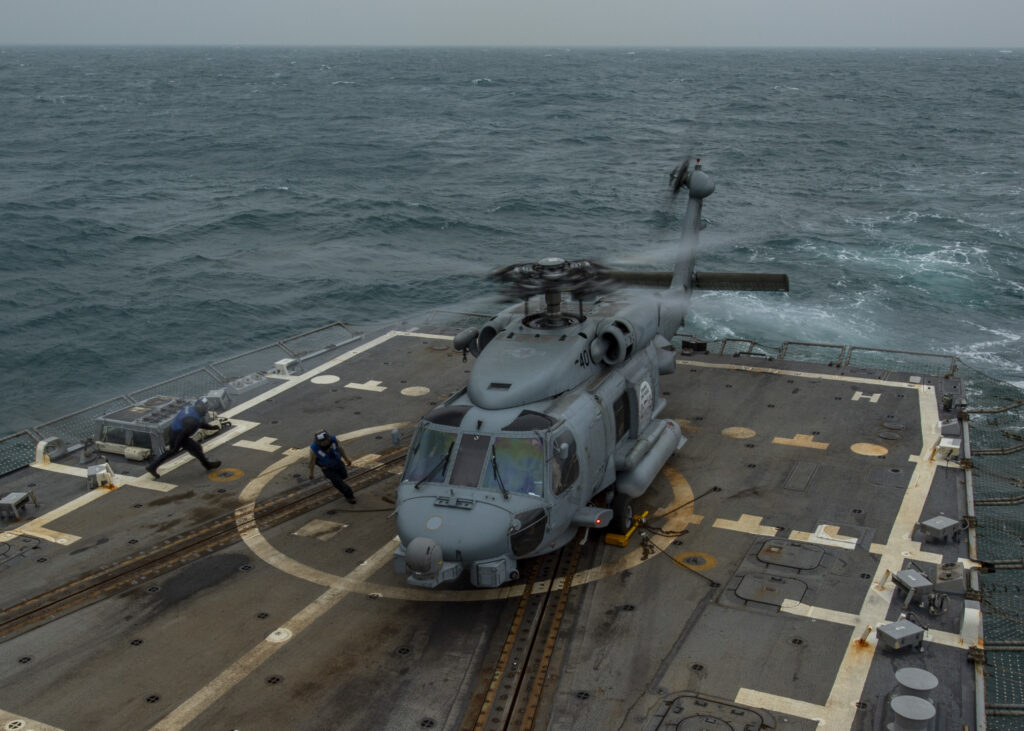
ARLINGTON, Va. — A member of Congress on the House Armed Services Committee said the Navy must be ready by 2025 to counter a Chinese invasion of Taiwan.
Citing the assertion of former commander of Indo-Pacific Command, Adm. Phil Davidson, that China could move against Taiwan by 2025, Rep. Mike Gallagher (R-Wisconsin), speaking Jan 12 at the Surface Navy Association’s annual symposium in Arlington, said the Unites States “must prepare for the reality that war that starts in the territorial waters around Taiwan may not stay there.”
Gallagher was critical of the concept of integrated deterrence in that it fosters a false hope that soft power can deter a determined enemy.
“My concern is that integrated deterrence is the latest in a series of Pentagon buzzwords that ultimately serve as a smoke screen for dis-investing in defense and making do with a force that is too small to meet global requirements,” he said. “This jargon provides pseudo-intellectual cover for political leadership that is too weak or too distracted to give the military what it needs to execute its missions and to make hard choice between military services that might actually free up resources for the main effort: deterring China from invading Taiwan.”
He praised his colleague Rep. Elaine Luria (D-Virginia), also speaking at the symposium, for her “tracing the historical pattern of these calls for ‘divesting to invest.’”
“What we need to integrate into deterrence is more conventional hard power: more ships, more long-range missiles, more long-range bombers in the Indo-Pacific, things that will make the PLA [People’s Liberation Army] think twice,” he said.
“Betting on tomorrow’s transformative technology probably makes less sense than fielding reliable technologies that work today,” he said.
Gallagher offered a few suggested initiatives to improve the Navy’s position versus China:
- Using American territories such as Guam, Wake, and Midway to host long-range anti-air and anti-surface weapons and intelligence, surveillance and reconnaissance assets or serve as logistics nodes.
- Hardening existing defenses in the island chains.
- “Creatively use existing platforms and systems so they can better contribute to the 2025 near-term fight.”
- Building a larger Navy, though he noted that ships authorized this year are not likely to be ready for combat by 2025.
He warned that the current unavailability of the Red Hill fuel farm in Hawaii was “unacceptable” and must be restored to operation. He termed it as “the beating heart of America’s Pacific posture.”
Gallagher — in whose district some littoral combat ships and frigates are built — listed some near-term initiatives that could improve the Navy’s posture in the Pacific.
- Use littoral combat ships as stop-gap craft to enable distributed operations until the light amphibious warship comes on line.
- Put Marine anti-ship missiles on board littoral combat ships for expeditionary operations.
- Use the LCS as “mother ship for unmanned swarms” and as a command-and-control node.
- Use cruisers and early DDGs slated for retirement as missile barges and as missile-defense ships for harbors to keep valuable VLS [vertical launch system] cells “in the game” or for conventional prompt strike
Gallagher also said the Navy needs to move out on the DDG(X) next-generation destroyer and the Department of the Navy should commit to building two large surface combatants per year for 10 years.
He asserted that the only short war for Taiwan would be a Chinese victory.
“So, if we’re going to win, we have to buy time to mass assets in the region while denying a Chinese invasion,” he said. “I’m concerned that our planning has not caught up to that reality.”
He advocates the re-establishment of U.S. Taiwan Defense Command to “fully integrate wartime planning with Taiwan.”






